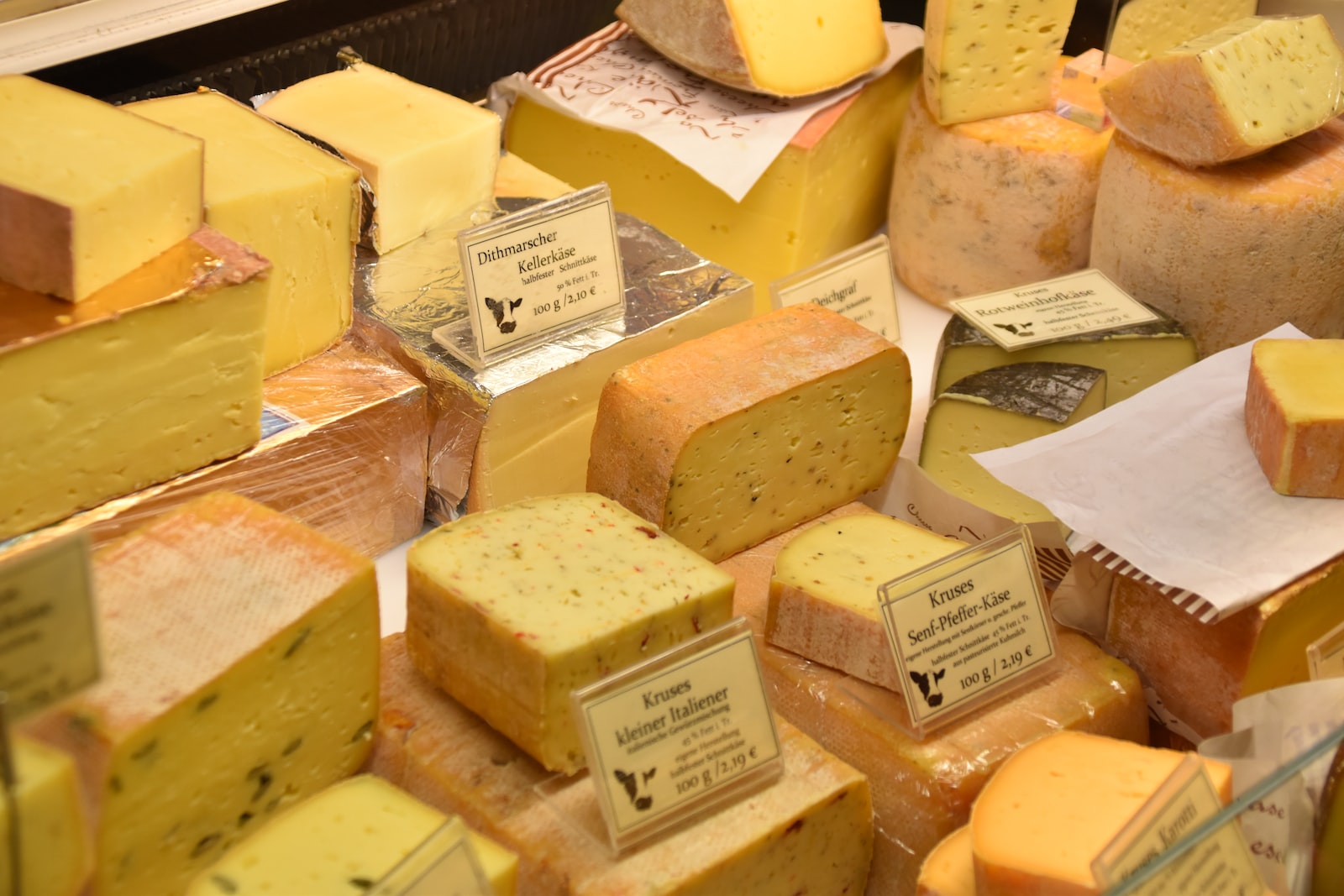Cheese is a dairy product made from the curdled milk of animals such as cows, goats, and sheep. It is one of the world’s oldest and most popular foods, with a history that dates back thousands of years. Cheese is produced in a variety of styles and flavors, ranging from soft and creamy to sharp and tangy. It is a staple ingredient in many dishes and is also enjoyed on its own as a snack.
The origins of cheese can be traced back to ancient civilizations in the Middle East and Europe. People discovered that by curdling milk, they could produce a food that was both nourishing and long-lasting. Over time, cheese became an important food source for many cultures, and was often traded and transported long distances.
The process of making cheese begins with the curdling of milk. This is done by adding a starter culture, which contains lactic acid bacteria, to the milk. The bacteria produce lactic acid, which causes the milk to curdle and separate into curds and whey. The curds are then drained, salted, and molded into different shapes and sizes.
The flavor and texture of cheese depend on several factors, including the type of milk used, the starter culture, the length of time it is aged, and the methods used in production. Some cheeses are soft and creamy, while others are hard and crumbly. Some are mild and buttery, while others are sharp and tangy. Some are made to be melted, while others are meant to be eaten on their own.
There are hundreds of different types of cheese, each with its own unique flavor and texture. Some of the most popular types of cheese include cheddar, mozzarella, gouda, and brie. These cheeses are used in a variety of dishes, from pizza and sandwiches to pasta and grilled cheese.
Cheese is a nutritious food that is high in calcium, protein, and other essential nutrients. It is also a good source of healthy fats and has been shown to be beneficial for cardiovascular health. However, cheese is also high in saturated fat and sodium, so it should be consumed in moderation as part of a balanced diet.
The cheese industry is a multi-billion dollar industry that spans the globe. The largest producers of cheese are the United States, Europe, and Australia. Many countries have a rich cheese-making tradition, and many cheeses are protected by geographical indications, which specify the origin and methods of production.
The cheese industry is facing a number of challenges, including increasing demand for artisanal and specialty cheeses, concerns about animal welfare and sustainability, and the need to reduce waste in the production process. In response, many cheese makers are focusing on sustainable and ethical production practices, and are using new technologies to reduce waste and improve the quality of their products.
In conclusion, cheese is a versatile and delicious food that has been enjoyed for thousands of years. It is a staple ingredient in many dishes and is also enjoyed on its own as a snack. Cheese is a nutritious food that is high in calcium and other essential nutrients, but it should be consumed in moderation as part of a balanced diet. The cheese industry is a multi-billion dollar industry that is facing challenges such as sustainability and animal welfare, but it is also evolving to meet the needs of consumers and to ensure a sustainable future.








